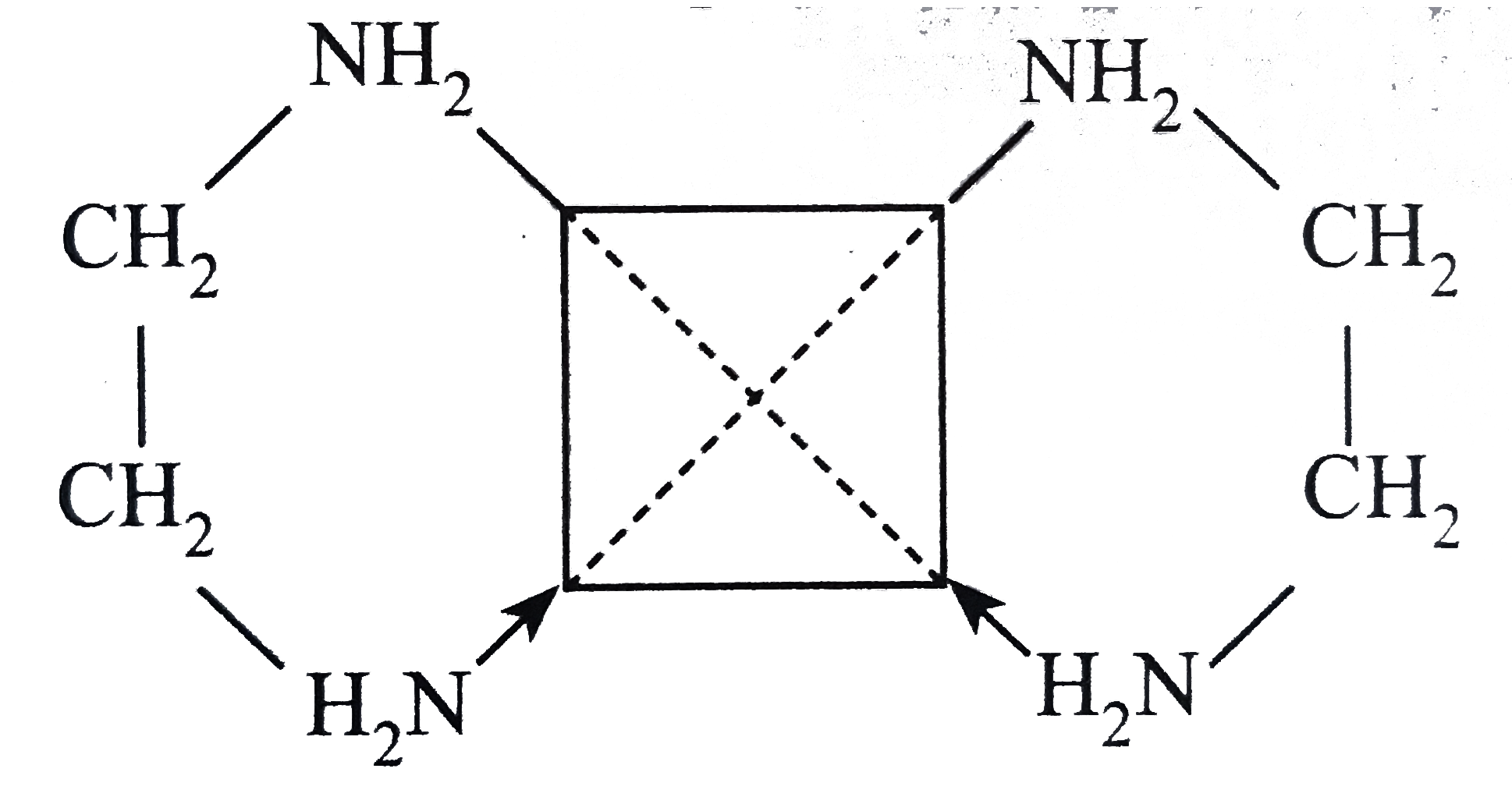Square planar complexes of the type MABXL (where A, B, X and L are unidentates) show
two cis and one trans isomer
two trans and one cis isomer
two cis and two trans isomers
one cis and one trans isomer
The correct Answer is:A
To solve the question regarding the square planar complexes of the type MABXL, we need to analyze the possible isomers that can be formed with the given unidentate ligands A, B, X, and L. Here’s a step-by-step breakdown of the solution:
Step 1: Understanding the Structure
- The complex is square planar, meaning the metal (M) is at the center and the ligands (A, B, X, L) are positioned at the corners of a square.
- Each ligand is unidentate, which means each ligand can only attach to the metal at one point.
Hint: Visualize the square planar structure to understand the arrangement of ligands around the central metal.
Step 2: Arranging the Ligands
- In a square planar arrangement, we can place the ligands in different positions.
- We can fix one ligand in a position and then see how the other ligands can be arranged.
Hint: Fix one ligand (e.g., A) and explore the arrangements of the other three ligands (B, X, L).
Step 3: Identifying Possible Isomers
- By fixing one ligand, we can explore the arrangements of the remaining ligands.
- For example, if we fix A at one position, we can have:
1. B opposite A, with L and X in the remaining two positions.
2. L opposite A, with B and X in the remaining two positions.
3. X opposite A, with B and L in the remaining two positions.
Hint: Consider the positions of the ligands relative to each other (cis and trans configurations).
Step 4: Classifying Isomers
- We can classify the isomers based on the positions of the ligands:
- Cis Isomers: Ligands that are adjacent to each other.
- Trans Isomers: Ligands that are opposite each other.
- In our case, we can see that:
- When L is opposite B, X is adjacent to both A and L (cis).
- When L is opposite X, B is adjacent to both A and L (cis).
- When B is opposite X, A is adjacent to both L and B (trans).
Hint: Count the arrangements where ligands are adjacent (cis) and those that are opposite (trans).
Step 5: Conclusion
- After analyzing the arrangements, we find:
- There are two cis isomers (where L and B or L and X are adjacent).
- There is one trans isomer (where B and X are opposite).
Thus, the final answer is that the square planar complex MABXL shows two cis and one trans isomer.
Final Answer: Two cis and one trans isomer are possible.
- The complex is square planar, meaning the metal (M) is at the center and the ligands (A, B, X, L) are positioned at the corners of a square.
- Each ligand is unidentate, which means each ligand can only attach to the metal at one point.
- In a square planar arrangement, we can place the ligands in different positions.
- We can fix one ligand in a position and then see how the other ligands can be arranged.
- By fixing one ligand, we can explore the arrangements of the remaining ligands.
- For example, if we fix A at one position, we can have:
1. B opposite A, with L and X in the remaining two positions.
2. L opposite A, with B and X in the remaining two positions.
3. X opposite A, with B and L in the remaining two positions.
- We can classify the isomers based on the positions of the ligands:
- Cis Isomers: Ligands that are adjacent to each other.
- Trans Isomers: Ligands that are opposite each other.
- When L is opposite B, X is adjacent to both A and L (cis).
- When L is opposite X, B is adjacent to both A and L (cis).
- When B is opposite X, A is adjacent to both L and B (trans).
- After analyzing the arrangements, we find:
- There are two cis isomers (where L and B or L and X are adjacent).
- There is one trans isomer (where B and X are opposite).
Topper's Solved these Questions
- CORDINATION COMPOUNDSBook:PRADEEPChapter:CORDINATION COMPOUNDSExercise:Short Answer Questions
Explore 64 Videos
- CORDINATION COMPOUNDSBook:PRADEEPChapter:CORDINATION COMPOUNDSExercise:Matching Type Question
Explore 5 Videos
- CORDINATION COMPOUNDSBook:PRADEEPChapter:CORDINATION COMPOUNDSExercise:NCERT Exercises
Explore 32 Videos
- CHEMISTRY IN EVERYDAY LIFE Book:PRADEEPChapter:CHEMISTRY IN EVERYDAY LIFE Exercise:IMPORTANT QUESTION FOR BOARD EXAMINATION
Explore 30 Videos
- D- AND F-BLOCK ELEMENTSBook:PRADEEPChapter:D- AND F-BLOCK ELEMENTSExercise:IMPORTANT QUESTIONS
Explore 30 Videos
Similar Questions
Assertion (A) Complexes of MX6 and MX5L type (X and L are unidentate) do not show geometrical isomerism.
Reason (R) Geometrical isomerism is not shown by complexes of coordination number 6.
View SolutionCis-trans isomerism is found in square planar complexes of molecular formula: (a and b are monodentate ligands)
View Solution
Knowledge Check
The square planar complexes are
A[Pt(NH3)2Cl2]B[Ni(CN)4]2−C[NiCl4]2−D[PtCl4]2−A square planar complex represented as:
 A(a) Geometrical isomerismB(b) Linkage isomerismC(c) Optical isomerismD(d) None of these
A(a) Geometrical isomerismB(b) Linkage isomerismC(c) Optical isomerismD(d) None of theseA square planar complex is represented as:
A(a) Geometrical isomersB(b) Optical isomerismC(c) Linkage isomerismD(d) None
Assertion (A) Complexes of MX6 and MX5L type (X and L are unidentate) do not show geometrical isomerism.
Reason (R) Geometrical isomerism is not shown by complexes of coordination number 6.
View SolutionStatement-1: Complexes of MX6 and MX5L type (X and L are unidentate) do not show geometrical isomerism.
Statement-2: Geometrical isomerism is not shown by complexes of coordination number 6.
View SolutionStatement-1: Complexes of MX6 and MX5L type (X and L are unidentate) do not show geometrical isomerism.
Statement-2: Geometrical isomerism is not shown by complexes of coordination number 6.
View SolutionThe square planar complex (MABCD) can show
View SolutionA complex MA3X3. Where A and X are unidentate ligands may give
View Solution